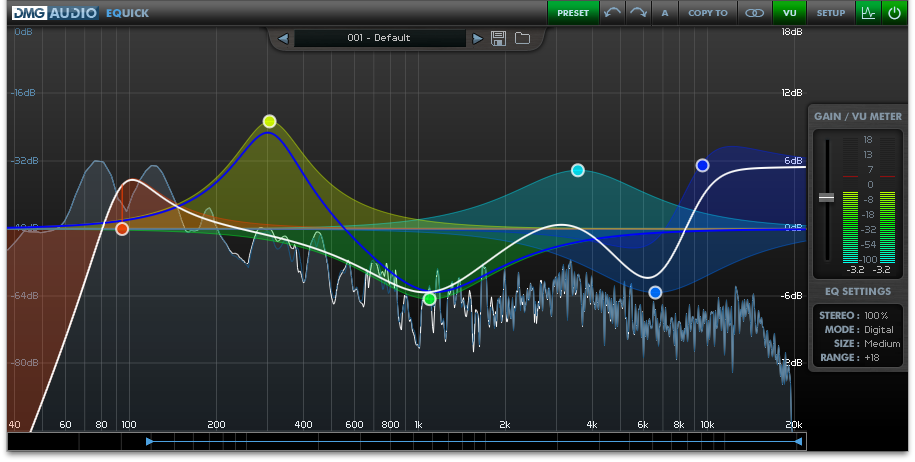

Upper Midrange (Approximately 2.6khz-5.2khz)Įxcept for the pipe organ and piano, not many instruments have fundamental frequencies this high. I won’t list instruments here because virtually all instruments have fundamentals found here in the midrange with the exception of Contra Bassoons, Bass Tuba and a very few others. The “proper” settings are the ones most pleasing to you the listener. Some settings are best suited to particular types of music. Actually there is controversy among engineers and audiophiles as to what the proper balance should be in this range.

Since our ears are most sensitive to midrange frequencies, midrange has the greatest effect on the overall sound of your stereo system. If the mid-bass region is underemphasized, the music sounds hollow and thin. Overemphasizing the mid-bass range gives the music a muddy, or “boomy” quality. This is where most ‘bass’ controls really muck up your music. Cello (my instrument), Bassoon, French Horn (Freedom Horn this year) and yes Male Voice are all here. Mid Bas has lots of instruments included in its frequency range. Only a few instruments actually reach this range such as the organ, contrabassoon and string bass. The 60hz-90hz range is where we notice the greatest perceptible changes in “bass response.” Try a test tone and see just how well you hear 20hz or even 32hz, compared with the same volume of 60hz or 90hz What is normally perceived as low bass material is actually in the 60hz-140hz range. There is little musical material with fundamental frequencies below 60hz. It’s much easier to understand and enhance the instruments you want to hear when you know what frequencies they cover. The black boxes represent their fundamental frequencies and the yellow boxes represent their harmonic frequencies. My chart above shows the approximate frequency ranges of various musical instruments and the human voice. So what is bass? What is treble? Oh, and what about midrange? Let’s break them down right here. As a result, very small energy changes in the midrange frequencies cause much more noticeable effects than do larger changes in the very low and/or very high frequency ranges. The ear is tuned more toward the midrange frequencies, where speech and voice communication occur (I guess we’re still cave people), than to the outer octaves of low bass and high-frequency musical harmonics. Interestingly, the human ear is more sensitive to certain octaves in the musical spectrum than to others. It is the harmonics that give each individual instrument its character, or timbre, and set it apart from all the rest. Given the often-talked-about musical range of 20hz-20khz, it is surprising to see just how low the musical fundamental frequencies actually are (almost all are under 3,500khz).But remember, it needs to be understood that if all instruments were perceived only by their fundamental frequency outputs, they would all sound alike. The Approximate Frequency Ranges chart below displays the frequencies generated by some familiar musical instruments (including our voices) with BOTH the numerical fundamental and harmonic approximate frequencies shown. Looking at one ‘note’ at a time doesn’t change the equation, it just makes it easier for us to look at it and understand it.

So for understanding, it’s much easier to look at the frequencies one at a time. But that doesn’t change the fact that it’s composed of individual tones.
#Low frequency graphic equalizer for mac generator
And the higher related frequencies, the harmonics, of 880, 1320, 1760, 2200hz complete the musical sound we hear.īut it’s the fundamental that what we call the actual note. And when you use a tone generator or test disc to generate a sine wave of say 440hz, it’s the fundamental note alone without harmonics.Of course music is composed of thousands of frequencies all sounding at once.

In the case of middle A for example, it’s 440 Hertz. And like other perceptions, we actually construct the combination of sounds in our brains.When we hear a note like middle A on a piano, a complex set of oscillations are transmitted through the air to our ears. It’s the harmonics that allow you to know the difference between one instrument and another.Of course if you strike a string like a piano (yes it is a percussion instrument), pluck a guitar, or draw a bow over a cello, you’ll have additional clues to work with.But we perceive the notes on a musical instrument or sung by a vocalist by combining fundamental and harmonic tones. Musical ‘notes’ are made up of fundamental tones (frequencies) and harmonics. Equalizer And Frequency Equalization Tutorialįirst a word about Fundamental Frequencies and Harmonics.


 0 kommentar(er)
0 kommentar(er)
